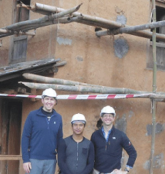Through our partnership with the Rockefeller Foundation’s 100 Resilient Cities initiative, RMS is tasked with helping cities around the world become more resilient to the physical, social, and economic challenges that are a growing part of the 21st century. Our recent engagement with the city of Berkeley, California highlighted how modeling can be used to help a city acutely understand its risk and create policy that accurately protects against it, thereby helping to save lives of vulnerable populations.
RMS completed a dual-view seismic analysis for the city of Berkeley. The first was a city-wide analysis showcasing the vulnerability of all neighborhoods across Berkeley under various magnitude scenarios. RMS then completed a building-level study on the city’s critical infrastructure of care and shelter sites. These structures are the city’s emergency shelters and are intended to house all displaced residents after an earthquake. Our analysis concluded that these shelters are located in areas susceptible to higher than average damage, indicating that these facilities would be critical to surrounding neighborhoods following an earthquake. Furthermore, we found that in their current construction state, these buildings performed worse than average in all seismic scenarios modeled and that retrofitting these buildings was an economical way to improve building performance.
This RMS analysis proved to be a key recommendation that Berkeley’s Chief Resiliency Officer took to the city council for a bond measure to fund retrofits for their care and shelter sites. If Berkeley secures the funding for these retrofits, our analysis will have provided leverage for a policy directive that will result in increased protection for particularly vulnerable segments of the population exposed to seismic risk.
RMS was able to showcase the seismic risk of all neighborhoods throughout the city, contextualize the geographic vulnerability of shelter sites, and propose measures for helping to ensure that these critical pieces of infrastructure help to protect the populations that they serve. This project highlights that catastrophe modeling can be a key determinant in helping governments, NGOs, and the private sector understand their risk and increase resilience.





